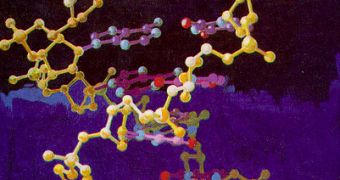Genetics and medicine researchers were always surprised to find that our immune system in the gut, while able to fight off bacterial infections, simultaneously remained tolerant towards the friendly resident bacteria. But a recent study reveals that the newly-discovered “pims” gene gets activated by the gut's reaction to the actions of the “benevolent” bacteria and quickly suppresses it, which results in the effective tolerance towards gut's microbiota.
Similarly, pims is described to also control the magnitude of the immune reactions against toxic bacteria through the suppression of the immuno-reactivity whenever a specific activation limit is reached, thus providing that the reaction is restricted to the location of the infection and that it's directly proportional to the infection range. This could help understanding and acting against diseases where the normal immune response of the gut is disturbed, like Crohn's disease and ulcerative colitis.
Multicellular organisms tolerate or live in symbiosis with unicellular ones. Humans, for example, are inhabited by more microorganisms than the number of their body cells. Only the intestine is home to 100 trillion microbes, about ten times the amount of all our cells. But although we are (normally) perfectly immuno competent, our immune system doesn't record any negative reaction against the “friendly” bacteria. In order to survey the simultaneity of negative and positive reactions of the immune system, as well as the role of pims in this simultaneity, Nouara Lhocine, Francois Leulier, Paulo S. Ribeiro and their colleagues from four countries studied the tiny fruit-fly Drosophila, which shares a great deal of our genes. In the fruit-fly's case, the pims gene reacted to the immune response, specifically in the gut.
The following stage involved analyzing the behavior of the immune response in animals that lack pims. Besides the fact that the “friendly” bacteria got attacked by the immune response, its reaction to the toxic bacterial infection induced artificially threatened to extend to the unaffected regions as well, endangering the integrity of the body. This confirmed pims' relation to the spreading of the immune response and to the tolerance towards “friendly” microorganisms. Although some of its functionality could be established, the full exact mechanism by which it operates still remains elusive.

 14 DAY TRIAL //
14 DAY TRIAL //